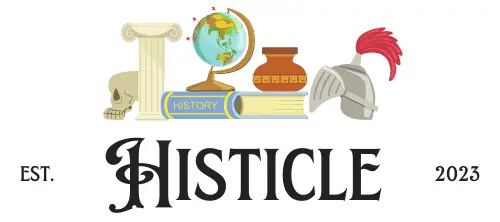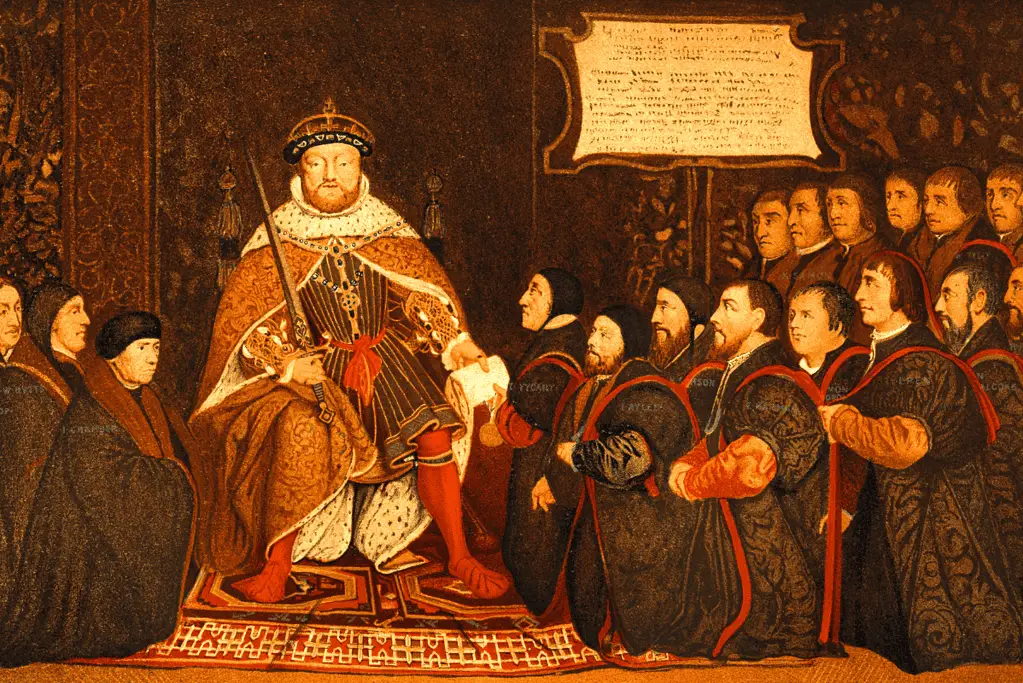
Facts about Henry VIII reveal a monarch who has captured the imagination of people worldwide for centuries.
Known for his tumultuous personal life, role in the English Reformation, and larger-than-life personality, Henry VIII is one of the most iconic figures in EngThisstory.
In this blog post, we’ll explore 10 fascinating facts about Henry VIII that shed light on the man behind the legend.
From his impressive intellectual pursuits to his scandalous marriages and his impact on the arts and culture of his time, these facts will give you a glimpse into the life of one of history’s most complex and influential monarchs.
So, sit back, relax, and prepare to be amazed by the incredible story of King Henry VIII.
10 Facts About Henry VIII Listed
Kicking off our list of 10 fascinating facts about Henry VIII is a lesser-known aspect of his character – his impressive musical talent.
Henry VIII was a skilled composer and performer, proficient in playing various instruments.
His love for music and his own musical abilities may come as a surprise to those who know him primarily for his political and personal pursuits.

1. Musical Monarch
Did you know that one of the most fascinating facts about Henry VIII is his musical talent?
Henry was a skilled composer and performer, proficient in playing the lute, organ, and virginals (a type of harpsichord).
He also had a passion for singing and would often entertain his court with his musical abilities.
Throughout his reign, Henry VIII composed numerous pieces, including masses, anthems, and ballads.
His most famous composition, “Pastime with Good Company,” also known as “The King’s Ballad,” showcased his love for music and his belief in the importance of leisure activities.
Listen to Pastime with Good Company, written by Henry VIII, on YouTube!
This song became so popular that it was widely performed and adapted long after his death.
Henry’s musical legacy is a testament to his diverse range of talents and interests, making him one of the most intriguing monarchs in English history.

2. Linguistic Prowess
Another one of the remarkable facts about Henry VIII is his linguistic prowess.
The king was fluent in several languages, including English, French, Latin, and Spanish.
His ability to communicate effectively in multiple languages was a valuable asset in diplomatic relations and international affairs.
Henry’s love for learning and education was instilled in him from a young age.
As the second son of Henry VII, he was initially destined for a career in the Church and received an extensive education in theology, literature, and languages.
This early training laid the foundation for his impressive linguistic skills.
Throughout his reign, Henry VIII utilized his language abilities to engage with foreign ambassadors, draft treaties, and correspond with other European monarchs, solidifying his reputation as a learned and ltured ruler.

3. Jousting Injury
One of the most significant facts about Henry VIII surrounds a jousting accident that profoundly impacted his life.
In January 1536, Henry participated in a jousting tournament at Greenwich Palace.
During one of his matches, he was thrown from his horse and crushed under the weight of his heavy armor.
The king was severely injured, suffering a deep gash on his thigh and a suspected concussion.
This incident marked a turning point in Henry’s life, as his health began to decline rapidly following the accident.
Some historians speculate that the head injury he sustained may have contributed to his increasingly erratic behavior and mood swings in his later years.
The jousting incident serves as a reminder of the dangers associated with this popular medieval sport and its lasting impact on one of England’s most f ous monarchs.

4. Germ Aversion
Another lesser-known fact about Henry VIII is his strong aversion to germs and uncleanliness.
The king was known for his meticulous attention to personal hygiene, which was quite unusual for his time.
He insisted on having clean sheets and tablecloths every day and required his servants to maintain a spotless living environment.
Henry’s fear of germs was so intense that he would rarely visit his wives during their pregnancies.
He believed that the birthing process was unclean and could potentially expose him to illness.
This aversion to germs also extended to his interactions with others.
Henry would often avoid shaking hands or coming into close contact with people he deemed unclean.
While some may have viewed his behavior as eccentric, Henry’s emphasis on cleanliness likely contributed to his relatively good health throughout his life, despite the prevalence of disease in the 16th century.

5. Arctic Pet
One of the most unusual facts about Henry VIII is that he once received a polar bear as a gift from the King of Norway.
In 1252, King Haakon IV of Norway sent the bear to Henry, along with a keeper, as a token of friendship and alliance.
Henry was fascinated by the exotic animal and kept it in the Tower of London’s menagerie.
The polar bear was allowed to swim and hunt for fish in the River Thames, tethered to a long leash held by its keeper.
This incredible sight undoubtedly amazed and entertained the people of London.
The polar bear’s presence in Henry’s court showcased the king’s power, wealth, and his ability to acquire rare and magnificent creatures from distant lands.

6. Majestic Title
One of the most interesting facts about Henry VIII is that he was the first English monarch to be addressed as “Your Majesty.”
Before Henry’s reign, English kings and queens were typically addressed as “Your Grace” or “Your Highness.”
However, Henry believed that these titles were insufficient to convey his supreme authority and divine right to rule.
In the 1520s, Henry began insisting that his courtiers and subjects address him as “Your Majesty.”
This change in royal address was a significant shift in the perception of the monarch’s power and prestige.
By adopting the title “Your Majesty,” Henry elevated himself above the nobility and clergy, emphasizing his status as the supreme head of the Church of England and the ultimate authority in all matters of state.
This new form of address set a precedent for future English monarchs and remains to this day.
7. Royal Gambler
Another intriguing fact about Henry VIII is his passion for gambling.
The king was known to be an avid gambler, often spending vast sums of money on games of chance.
He particularly enjoyed playing dice, cards, and betting on sports such as tennis and jousting.
Henry’s love for gambling was so great that he would sometimes spend entire days engrossed in gaming activities.
He even had a special gaming room built at Hampton Court Palace to accommodate his favorite pastime.
The king’s gambling habits were not only a source of entertainment but also a way to demonstrate his wealth and power.
However, his excessive gambling did lead to some financial strain on the royal treasury.
Despite this, Henry’s enthusiasm for gambling remained a constant throughout his life, cementing his reputation as one of history’s most notorious royal gamblers.
8. Palace Collector
Throughout his reign, Henry amassed an impressive portfolio of royal residences, each grander and more opulent than the last.
He spent vast sums of money on construction projects, transforming existing manor houses into magnificent palaces fit for a king.
Among Henry’s most famous palaces are Hampton Court, St. James’s Palace, and Whitehall Palace.
He also extensively renovated Windsor Castle and the Palace of Beaulieu.
These palaces showcased the finest architecture, art, and furnishings of the time, reflecting Henry’s wealth, power, and sophisticated tastes.
The king’s love for lavish residences was not only a personal indulgence but also a political statement, demonstrating his authority and prestige to his subjects and foreign dignitaries.
Henry’s legacy as a collector of palaces is just one of the many fascinating facts about Henry VIII that continue to captivate historians and th public alike.
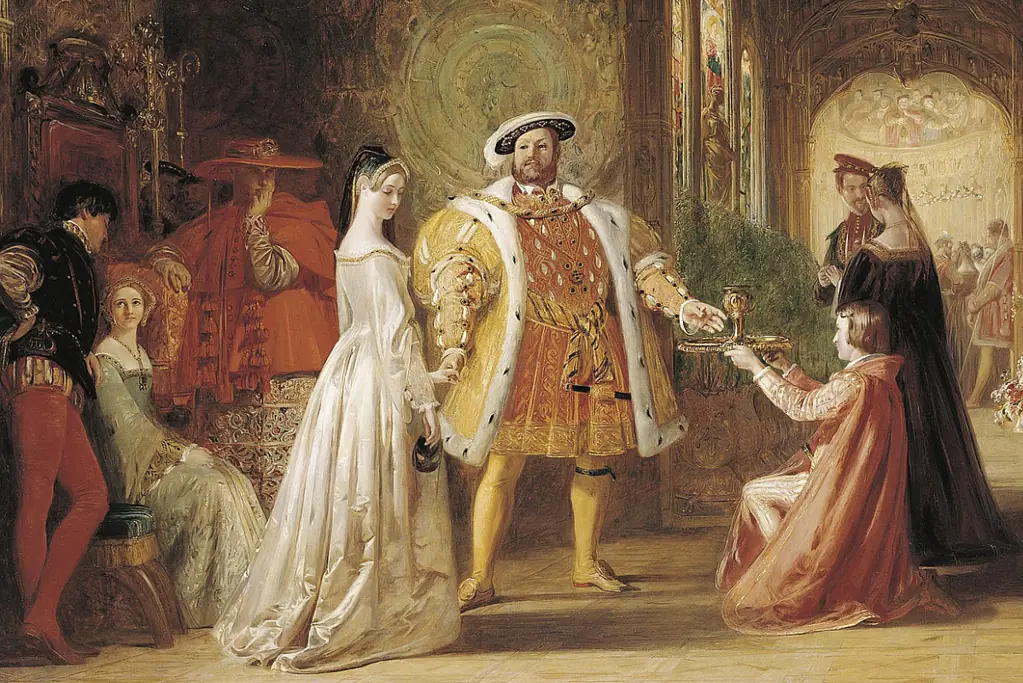
9. Expanding Waistline
One of the most well-known facts about Henry VIII is his dramatic weight gain throughout his life.
As a young man, Henry was tall, athletic, and handsome, known for his prowess in sports like jousting and tennis.
However, as he aged, the king’s waistline began to expand at an alarming rate.
By the time Henry reached his late 40s, he had become severely obese, with a waist measurement of around 54 inches (137 cm).
His excessive weight gain was likely due to a combination of factors, including a rich diet, lack of exercise, and a series of injuries that limited his mobility.
Henry’s expanding waistline not only affected his physical appearance but also his health, contributing to a range of ailments such as gout, diabetes, and heart problems.
Despite his obesity, Henry remained a formidable figure, and his larger-than-life presence continues to be one of the most intriguing facts about Henry VIII.
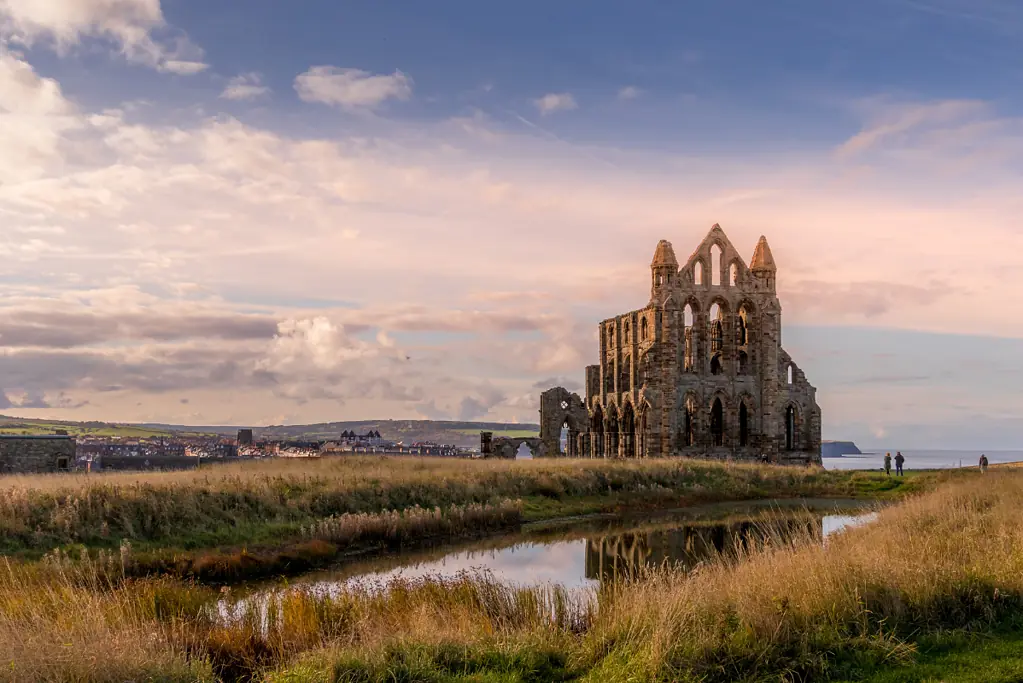
10. Final Utterance
One of the most intriguing facts about Henry VIII is the mystery surrounding his final words.
As the king lay dying in his bedchamber at Whitehall Palace on January 28, 1547, he was attended by his closest advisors and confidants.
According to some accounts, Henry’s last words were, “Monks! Monks! Monks!” which has led to much speculation about their meaning.
Some historians believe that Henry’s final utterance was a reference to the monks he had ordered to be executed during the dissolution of the monasteries.
Others suggest that the king may have been haunted by guilt over his actions and was calling out for spiritual guidance in his final moments.
However, the true meaning of Henry’s last words remains a mystery, adding to the intrigue surrounding the life and death of this fascinating monarch.
Regardless of their interpretation, Henry’s final words continue to be one of the most captivating facts about Henry VIII, sparking the imagination of historians and enthusiasts alike.
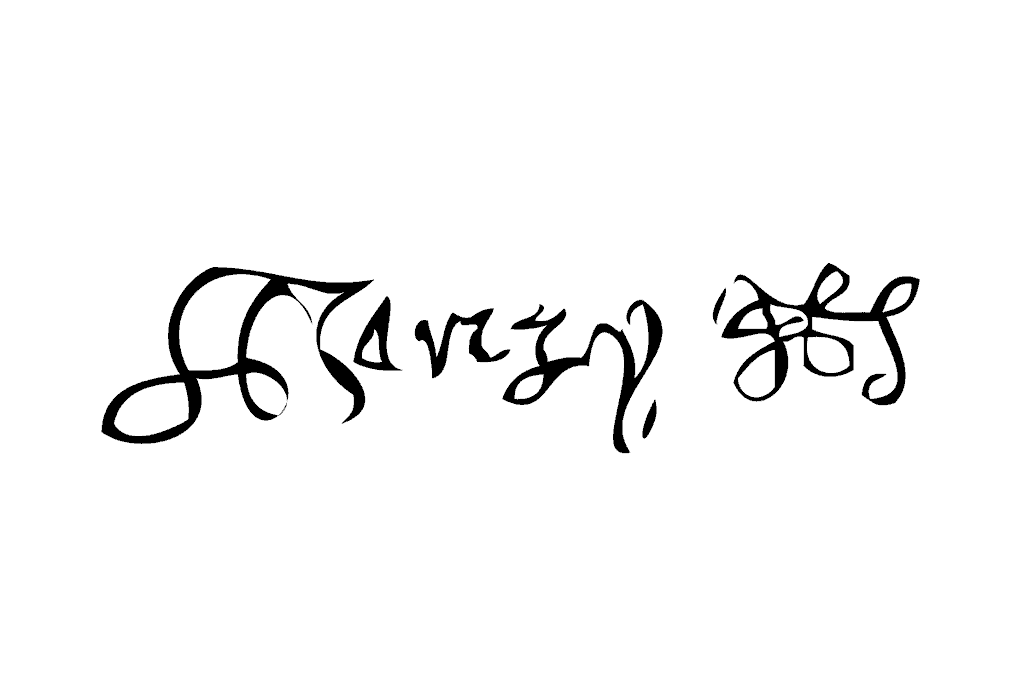
Brief Biography:
Full Name:
Henry Tudor, known as Henry VIII
Date of Birth:
June 28, 1491
Place of Birth:
Greenwich Palace, Greenwich, England
Date of Death:
January 28, 1547
Profession:
King of England and Ireland (1509-1547)
Major Achievements:
- Established the Church of England and became its Supreme Head
- Oversaw the English Reformation and the dissolution of the monasteries
- Strengthened the Royal Navy and built coastal defenses
- Promoted the arts, education, and the English language
- Expanded the royal court and patronized scholars, artists, and musicians
- Secured the succession through his children Edward VI, Mary I, and Elizabeth I
Legacy:
Henry VIII is remembered as one of the most influential and controversial monarchs in English history.
His reign saw significant religious, political, and cultural changes that shaped the course of the nation.
Henry’s decision to break with the Roman Catholic Church and establish the Church of England had far-reaching consequences, setting the stage for centuries of religious conflict and the development of a distinct English identity.
Henry’s legacy also includes his six marriages, which have captured the public imagination for centuries.
His quest for a male heir led to the annulment of his first marriage to Catherine of Aragon and his subsequent marriages to Anne Boleyn, Jane Seymour, Anne of Cleves, Catherine Howard, and Catherine Parr,
These marriages, along with Henry’s larger-than-life personality and his impact on the arts and culture of his time, have cemented his status as one of the most fascinating figures in history.

Wrap-up: Facts About Henry VIII
As we’ve explored these 10 remarkable facts about Henry VIII, it’s clear that this iconic monarch left an indelible mark on English history.
From his role in the English Reformation to his scandalous personal life and his patronage of the arts, Henry VIII’s legacy fascinates and captivates us centuries after his death.
While some may view him as a tyrannical ruler, there’s no denying his impact on shaping the course of his nation and the world beyond.
So, the next time you hear someone mention King Henry VIII, remember these incredible facts and the complex, multifaceted man behind the legend.
His story is one that will continue to be told and retold for generations to come.
For more royal history, check out my complete list of Kings and Queens of England and Great Britain!

Reader Resources: Facts About Henry VIII
- “The Six Wives of Henry VIII” by Alison Weir – This bestselling book provides a detailed and fascinating account of Henry VIII’s six marriages and the women who shaped his life and reign. (Available on Amazon)
- “Henry VIII: The King and His Court” by Alison Weir – Another excellent book by Alison Weir, this one delves into the daily life and intrigues of Henry VIII’s court. (Available on Amazon)
- “The Tudors” – This popular Showtime series dramatizes the life and reign of Henry VIII, featuring Jonathan Rhys Meyers as the iconic monarch. (Available on DVD and streaming services)
- The Official Hampton Court Palace Guidebook – This beautifully illustrated guidebook takes readers on a tour of one of Henry VIII’s most famous palaces, offering insights into the king’s life and times. (Available through Historic Royal Palaces)
FAQs: Facts About Henry VIII
Here is a brief overview of the length of each of Henry VIII’s 6 marriages:
Catherine of Aragon (1485-1536): Married from June 11, 1509, until May 23, 1533 (23 years, 11 months, 12 days).
The marriage was annulled.
Anne Boleyn (c. 1501-1536): Married from Jan ary 25, 1533, until May 17, 1536 (3 years, 3 months, 23 days).
The marriage ended with Anne’s execution.
Jane Seymour (c. 1508-1537): Marr ed from May 30, 1536, until October 24, 1537 (1 year, 4 months, 24 days).
The marriage ended with Jane’s death.
Anne of Cleves (1515-1557): Married from anuary 6, 1540, until July 9, 1540 (6 months, 3 days).
The marriage was annulled.
Catherine Howard (c. 1523-1542): Married from July 28, 1 40, until November 23, 1541 (1 year, 3 months, 26 days).
The marriage ended with Catherine’s execution.
Catherine Parr (c. 1512-1548): Married f om July 12, 1543, until January 28, 1547 (3 years, 6 months, 16 days).
The marriage ended with Henry’s death.
According to historical records, at his heaviest, King Henry VIII weighed around 400 pounds (181 kilograms).
This was towards the end of his life when he had become increasingly obese and suffered from various health issues, including gout and leg ulcers.
It is said that the king’s waist measured 54 inches (137 cm) at this time, and he required the use of mechanical devices to move around his palaces.
His obesity was likely caused by a combination of factors, including a rich diet, lack of exercise, and various injuries he sustained throughout his life, particularly from jousting accidents.
It’s important to note that these figures are estimates based on historical accounts and descriptions, as there were no standardized methods for accurately measuring weight during Henry VIII’s time.
King Henry VIII was known for his love of animals and kept a variety of creatures in his royal menageries.
In addition to the famous polar bear, he owned:
Dogs: Henry VIII was particularly fond of dogs and ke t several breeds, including greyhounds, spaniels, and mastiffs.
Hawks and falcons: As an avid hunter, Henry VIII maintained a large collection of birds of prey for falconry, a popular sport among the nobility.
Horses: The king was an accomplished horseman and owned many fine horses for riding, hunting, and jousting.
Lions and leopards: Henry VIII received exotic big cats as gifts from foreign rulers and kept them in the Tower of London menagerie.
Monkeys and apes: The king’s menageries included various primates, which were considered novelty pets during the Tudor period.
Parrots and other exotic birds: Henry VIII’s collections included colorful and talking birds, such as parrots, which were prized for their beauty and ability to mimic human speech.
A lynx: Records indicate that Henry VIII owned at least one lynx, another exotic creature that was likely a gift from a foreign dignitary.
These animals not only served as entertainment for the court but also symbolized the king’s power, wealth, and international connections.
The menageries were a source of fascination and a display of the monarch’s prestige during Henry VIII’s reign.
References: Facts About Henry VIII
“A Quick Look at Royal Dogs.” Royal Central, 8 July 2023, royalcentral.co.uk/features/a-quick-look-at-royal-dogs-128351/. Accessed 13 Mar. 2024.
Archives, The National. “The National Archives – Homepage.” The National Archives, www.nationalarchives.gov.uk/education/resources/henry-viii/.
Chalmers, CR, and EJ Chaloner. “500 Years Later: Henry VIII, Leg Ulcers and the Course of History.” Journal of the Royal Society of Medicine, vol. 102, no. 12, Dec. 2009, pp. 514–517, https://doi.org/10.1258/jrsm.2009.090286.
Dinning, Rachel. “5 Things You (Probably) Didn’t Know about Henry VIII.” History Extra, History Extra, 28 Mar. 2019, www.historyextra.com/period/tudor/king-henry-viii-facts-wives-spouse-execution-weight-reformation-cromwell/.
“Henry VIII.” Historic Royal Palaces, Historic Royal Palaces, 2019, www.hrp.org.uk/hampton-court-palace/history-and-stories/henry-viii/.
“Henry VIII (R.1509-1547).” The Royal Family, 3 Aug. 2018, www.royal.uk/henry-viii.
https://www.facebook.com/thoughtcodotcom. “Henry VIII Beheaded Wives, Formed His Own Church, and Ruled England.” ThoughtCo, 2019, www.thoughtco.com/henry-viii-of-england-1222000.
Johnson, Ben. “Henry VIII, King of England and His Six Wives.” Historic UK, 2019, www.historic-uk.com/HistoryUK/HistoryofEngland/Henry-VIII/ .
Magazine, Smithsonian, and Nora McGreevy. “Researchers Find Remnants of Jousting Field Where Henry VIII Almost Died.” Smithsonian Magazine, www.smithsonianmag.com/smart-news/jousting-henry-viii-tudor-history-180976221/.
Nate Barksdale. “8 Things You May Not Know about Henry VIII.” HISTORY, 16 Dec. 2014, www.history.com/news/8-things-you-probably-didnt-know-about-henry-viii.
Royal Museums Greenwich. “Facts about Henry VIII.” Www.rmg.co.uk, www.rmg.co.uk/stories/topics/facts-about-henry-viii.
“The Musical Life of King Henry VIII.” Www.classical-Music.com, www.classical-music.com/articles/musical-life-king-henry-viii. Accessed 13 Mar. 2024.
“These Famous Historical Figures Suffered from Unique Phobias – Page 14.” History Collection, 7 Nov. 2018, historycollection.com/these-famous-historical-figures-suffered-from-unique-phobias/14/. Accessed 13 Mar. 2024.
